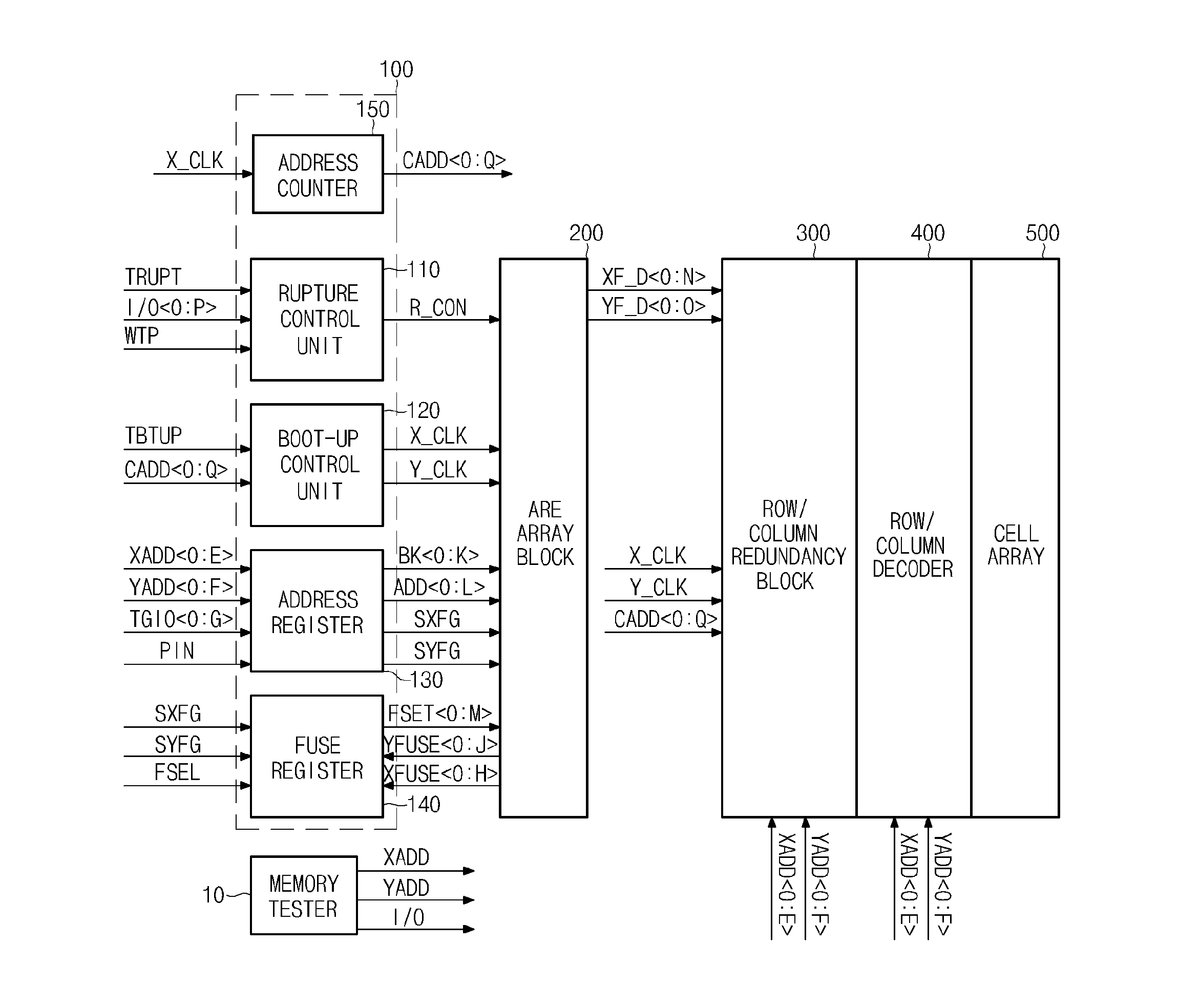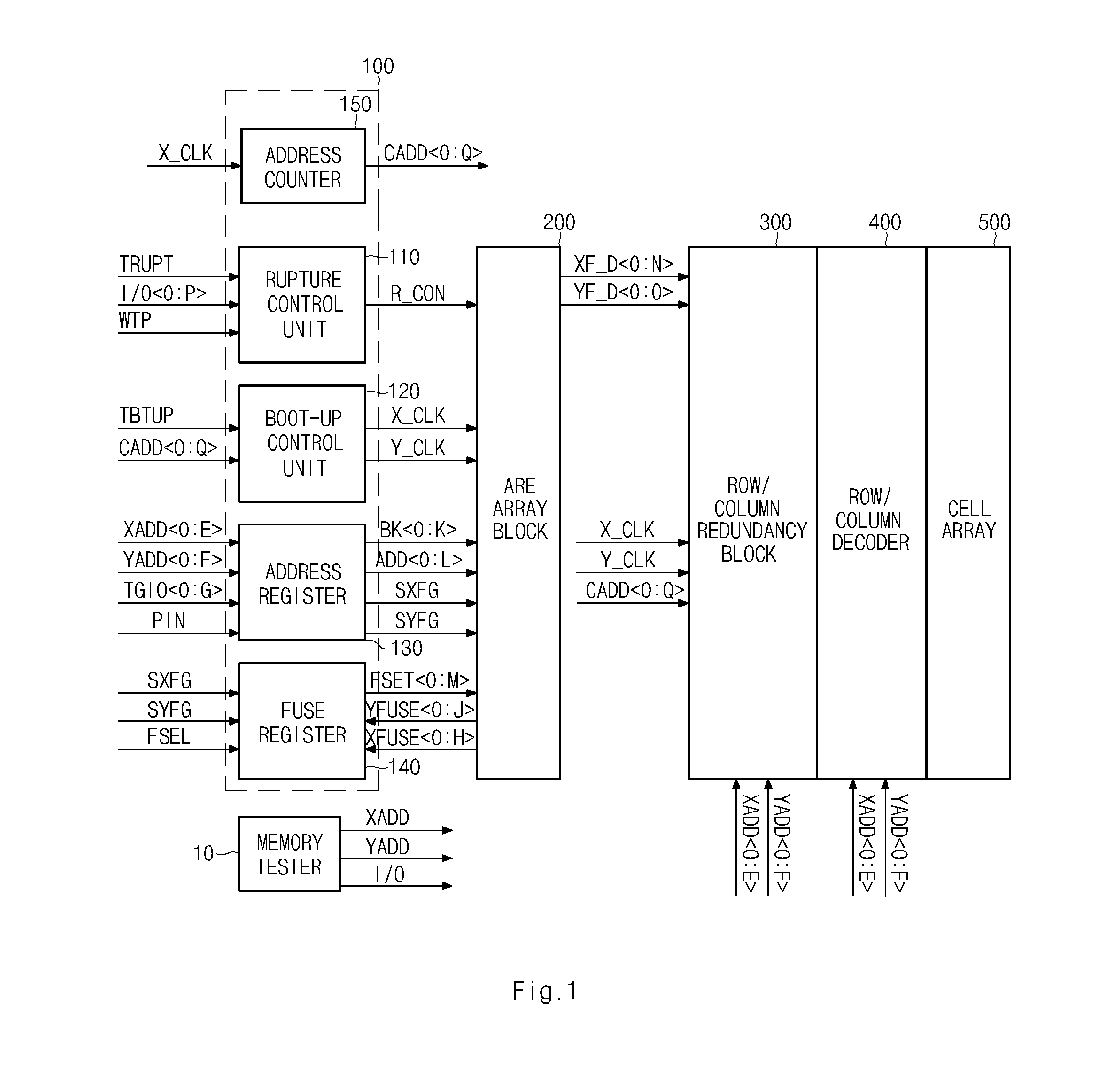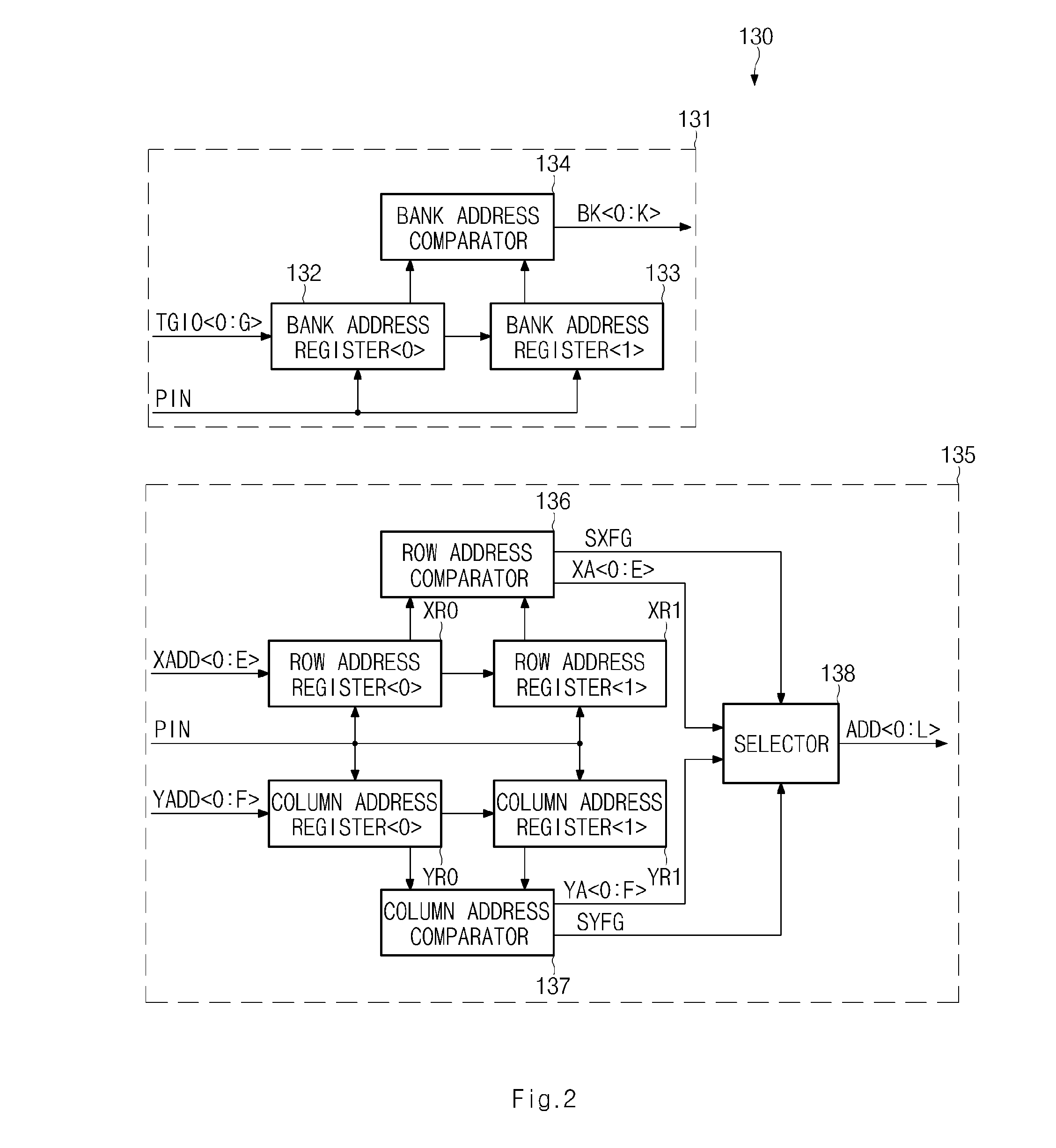Self-repair device
a self-repair and memory device technology, applied in the field of self-repair devices, can solve the problems of inefficient discarding entire semiconductor memory devices, failures occurring probabilistically in only a small number of memory cells, and mis-operation of corresponding semiconductor memory devices, so as to reduce the layout area, reduce the number of fuse registers, and increase the repair success rate
- Summary
- Abstract
- Description
- Claims
- Application Information
AI Technical Summary
Benefits of technology
Problems solved by technology
Method used
Image
Examples
Embodiment Construction
[0029]Hereinafter, a self-repair device according to the invention will be described below with reference to the accompanying drawings through various embodiments.
[0030]As the sizes of respective elements constituting a is semiconductor integrated circuit device gradually decrease and the number of elements included in one semiconductor chip gradually increases, the level of defect density rises. The rise in defect density is a direct factor that lowers the yield of a semiconductor device. If the defect density markedly increases, a wafer on which semiconductor devices are formed should be discarded.
[0031]In order to decrease the defect density, a redundancy circuit which replaces defective cells with redundancy cells has been suggested. In the case of a semiconductor memory device, a redundancy circuit (or a fuse circuit) may be used for each of a row-related line (for example, a word line) and a column-related line (for example, a bit line).
[0032]Such a redundancy circuit includes...
PUM
 Login to View More
Login to View More Abstract
Description
Claims
Application Information
 Login to View More
Login to View More - R&D
- Intellectual Property
- Life Sciences
- Materials
- Tech Scout
- Unparalleled Data Quality
- Higher Quality Content
- 60% Fewer Hallucinations
Browse by: Latest US Patents, China's latest patents, Technical Efficacy Thesaurus, Application Domain, Technology Topic, Popular Technical Reports.
© 2025 PatSnap. All rights reserved.Legal|Privacy policy|Modern Slavery Act Transparency Statement|Sitemap|About US| Contact US: help@patsnap.com



